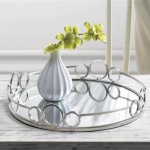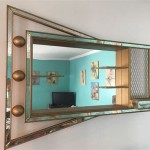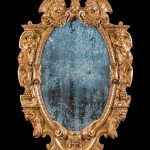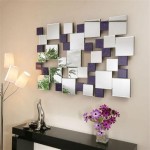What Kind of Image is Produced by a Convex Mirror?
Convex mirrors, often referred to as diverging mirrors, possess a reflective surface that bulges outwards. This distinctive shape dictates how light rays interact with the mirror and consequently, the characteristics of the image formed. Understanding these characteristics is crucial in various applications, from security to automotive design.
Key Properties of Images Formed by Convex Mirrors
- Virtual
- Upright
- Diminished
Unlike concave mirrors which can produce both real and virtual images depending on the object's position, convex mirrors always produce virtual images. This means the light rays reflecting off the mirror do not actually converge to form an image. Instead, they appear to diverge from a point behind the mirror. The image is formed by the apparent intersection of these diverging rays when traced back. Consequently, the image cannot be projected onto a screen.
The virtual image produced by a convex mirror is always upright. This means the image has the same orientation as the object. If the object is right side up, the image will also be right side up. This contrasts with concave mirrors, which can produce inverted images under certain conditions.
Furthermore, the image formed by a convex mirror is always diminished or smaller than the object. This reduction in size is a direct consequence of the diverging nature of the reflected light rays. Regardless of the object's distance from the mirror, the image will always appear smaller.
Applications of Convex Mirrors
- Security Mirrors
- Automotive Mirrors
- Blind Spot Mirrors
- Magnifying Glasses (with modification)
The properties of the image formed by convex mirrors make them invaluable in a variety of applications. A common example is their use as security mirrors in shops and stores. The wide field of view allows a single mirror to cover a large area, enabling security personnel to monitor a broader space. The diminished size of the image allows a larger area to be viewed within the mirror's frame.
Passenger-side car mirrors often utilize convex mirrors. The wider field of view afforded by these mirrors allows drivers to see a larger portion of the road behind them, effectively reducing blind spots. The "objects in mirror are closer than they appear" warning printed on these mirrors serves as a reminder of the diminished image size, cautioning drivers about the true distance of vehicles approaching from behind.
Similar to their use in automobiles, convex mirrors are frequently employed as blind spot mirrors for larger vehicles like trucks and buses. These mirrors aid in maneuvering and lane changes by providing a wider perspective of the surrounding traffic.
Understanding the Field of View
- Wider Field of View
- Enhanced Situational Awareness
A key advantage of convex mirrors is their wide field of view. The outward curvature of the mirror allows it to reflect light rays from a larger angle compared to a plane mirror. This wider field of view is a crucial factor in their application in security, automotive, and other contexts where monitoring a large area is essential.
This wider field of view translates to enhanced situational awareness for drivers and security personnel alike. By providing a more comprehensive view of the surroundings, convex mirrors contribute significantly to safety and security.
Image Location and the Focal Point
- Virtual Focal Point
- Image Located Behind the Mirror
The focal point of a convex mirror is a virtual point located behind the mirror's surface. It is the point from which the reflected rays appear to diverge. The image formed by a convex mirror is always located between the virtual focal point and the mirror's surface. This positioning is a direct consequence of the diverging nature of the reflected rays.
Understanding the virtual nature of the focal point and the location of the image behind the mirror is essential for comprehending the image formation process in convex mirrors. This understanding informs the practical applications and allows for the effective utilization of these mirrors in various contexts.
Ray Diagrams and Image Formation
- Parallel Rays Diverge
- Ray Tracing for Image Location
Ray diagrams provide a graphical method for determining the location and size of the image formed by a convex mirror. One key ray to consider is a ray parallel to the principal axis. Upon reflection, this ray appears to diverge from the focal point. Another ray to consider is one directed towards the center of curvature of the mirror. This ray is reflected back along its original path. The intersection of these reflected rays (or their extensions behind the mirror) determines the location of the image.
By utilizing ray diagrams, one can visualize the path of light rays and gain a deeper understanding of how the virtual, upright, and diminished image is formed by a convex mirror.
Can A Convex Mirror Form Magnified Image Quora
Is It Possible For A Convex Mirror To Produce Real Image When The Object Virtual Quora
Question Recalling Whether The Image Produced By A Convex Mirror Can Be Inverted Nagwa
Convex Mirror Image Formation Conditions Ray Diagram Uses
Image Formation By Convex Mirrors
Can A Convex Mirror Produce Real Image
Question Identifying The Maximum Size Of An Image Produced By A Convex Mirror Nagwa
What Image Is Formed When An Object In Front Of A Convex Mirror Quora
Image Formation By Convex Mirrors
The Virtual Image Produced By A Convex Mirror Is Of One Third Size Object Homework Study Com








